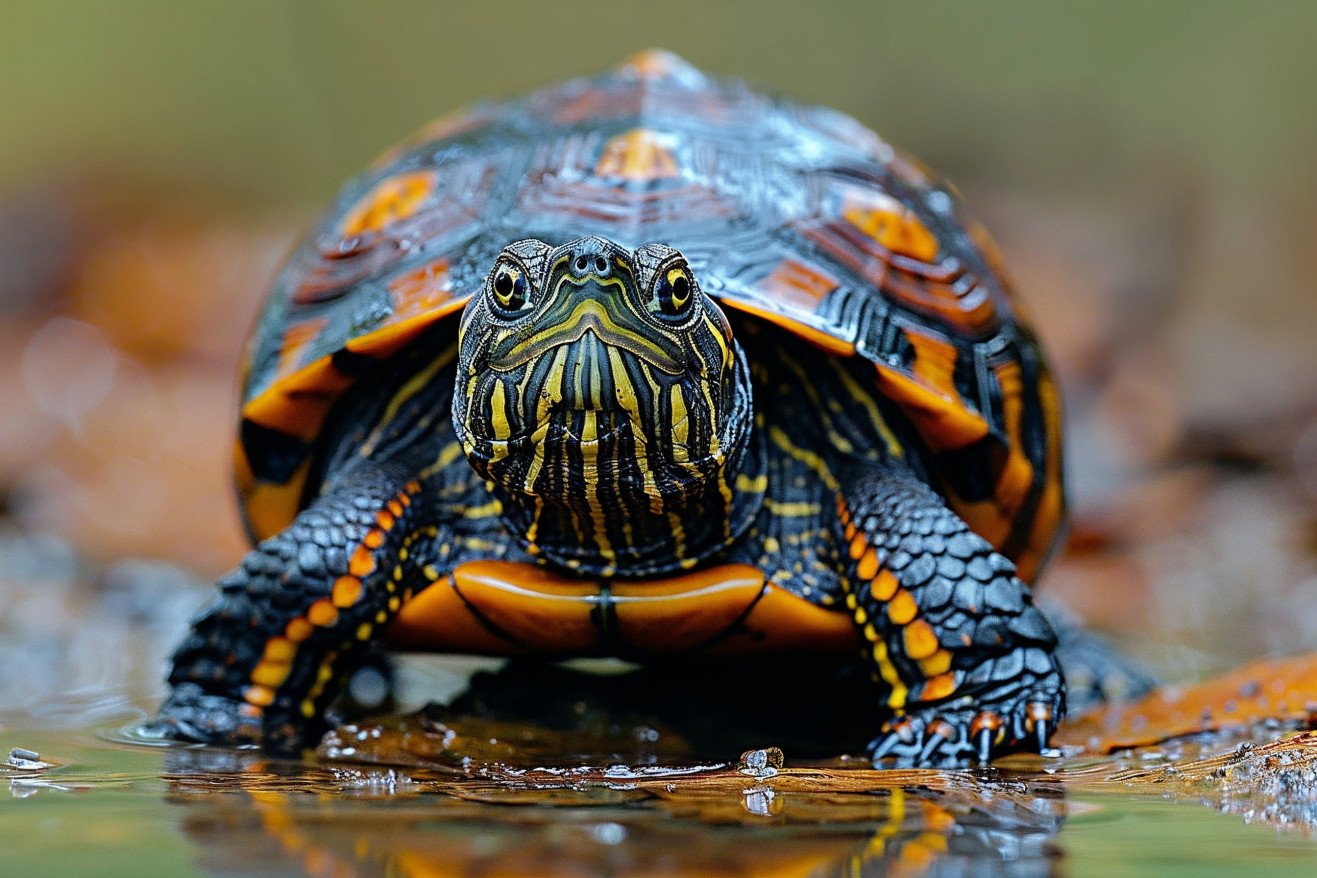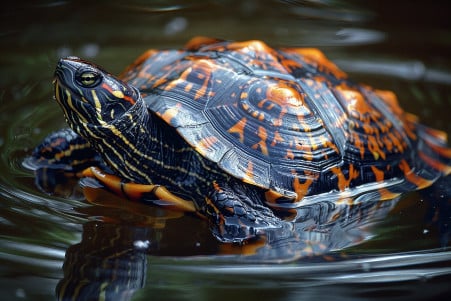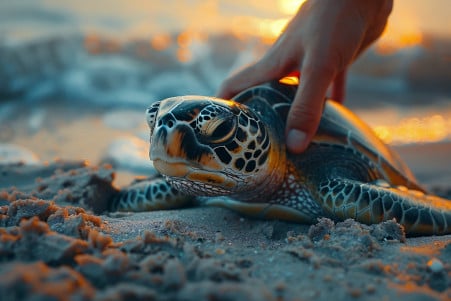What Would a Turtle Look Like Without a Shell? A Fascinating Investigation
28 April 2024 • Updated 27 April 2024

Turtles are some of the most adorable and endearing animals on the planet, but have you ever wondered what they would look like if they didn't have their distinctive shells? Turtles' shells are actually part of their skeletons and are made up of bones, cartilage, and scutes, which are keratin plates. So, if they didn't have their shells, they would look like a weird cross between a lizard and a turtle, with short legs, long necks, and wrinkly skin instead of their usual armored appearance.
In this article, we'll explore this fascinating question by delving into the worlds of biology, anatomy, and evolutionary science. By looking at the skeletons, development, and adaptations of turtles, we can piece together a pretty accurate picture of what turtles would look like without their shells. Get ready for a surprising investigation that will change the way you think about these amazing animals.
What would a turtle look like without its shell?
The Evolution of the Turtle Shell
The turtle shell is the result of millions of years of evolution, with the shells of early ancestors gradually developing into the fully formed, protective shells we know today. As noted on Wikipedia, this transformation was made possible by the widening and fusing of ribs, and by the late Triassic period, animals like Proganochelys had a fully formed shell.
Fossils have helped scientists understand the specifics of this evolution. The oldest known turtle shell fossil is 210 million years old, which is around the time of the first dinosaurs. The first turtles, like Odontochelys semitestacea, which was discovered in China in 2008, had a fully formed plastron (the bottom part of the shell) but only a partially formed carapace (the top part of the shell) that was made up of widened ribs, according to Turtle Times.
This evolution of the turtle shell was important to the survival and proliferation of turtles. As the shell became more fully formed and solid, it offered more protection to the turtle's internal organs, which helped them live and thrive in a variety of environments. The next section will look at what turtles would be like if they hadn't evolved this important adaptation.
What Would a Turtle Look Like Without a Shell?
If turtles didn’t have shells, they would essentially be reptiles with a fused spine and rib cage. According to the Turtle Ally Certification Program, the shell consists of the carapace (dorsal portion), plastron (ventral portion), and the bridge that connects the two. The ribs, vertebrae, and clavicles are fused to the bony shell.
As shown in the Visual Dictionary, the turtle’s internal organs, including the heart, lungs, and digestive system, would be left exposed and unprotected. The turtle’s lack of a shell would also mean that it would lose the structural support that the shell provides, which could impact the turtle’s ability to move and perform other necessary functions, according to Turtle Time, Inc. The turtle’s shell also helps with thermoregulation, camouflage, and protection.
This section has delved into the turtle’s internal skeletal structure and anatomy, demonstrating how the turtle’s shell protects its internal organs. The next section will discuss the important role the turtle’s shell plays in the turtle’s development and growth.
How the Shell Impacts Turtle Growth
The turtle shell is made up of calcium phosphate, the same material that human bones are made of, and it grows as the vertebrae and ribs fuse together, per How Do Turtles Grow Shells? | Turtle | Turtle Times. In turtles that are newly born and in their infancy, the shell is not yet fully formed, and the carapace and plastron start out as separate entities.
The temperature of the nest during the incubation period is especially important because it determines the sex of the turtles that are born. Females are born when the temperature is warmer, while males are born when the temperature is cooler, according to Baby Sea Turtles — SEE Turtles. Once the turtles are born, they have a special tooth called a caruncle that helps them break out of their eggs, and they stay in the nest for a few days to absorb their yolk sac.
This early part of the turtles' life cycle shows how important the shell is in protecting the turtles' internal organs, even from the moment they are born. As the shell continues to grow and fuse, it becomes even more important to the turtle's form and function.
Can Turtles Live Without Their Shells?
Turtles cannot live without their shells. The shell is part of their body, and it functions as their ribcage, spine, and skin, according to Can A Turtle Live Without Its Shell? » Science ABC. Since the shell is fused to the turtle's ribs and spine, it cannot be removed, and if it were, the turtle would be left without any protection.
In addition to protecting the turtle, the shell is also essential for the turtle's survival in other ways. For example, the shell is necessary for the turtle to swim, walk, go to the bathroom, and hide from predators, according to Can a Turtle Live Without a Shell? The True Facts - Turtle OMG. The shell is also important for the turtle's ability to regulate its body temperature, breathe, and sense the world around it, according to the San Diego Zoo Animals & Plants website.
This investigation has shown that the loss or removal of a turtle's shell would have dire consequences and leave the turtle unable to survive. The following section will discuss what happens when a turtle's shell is injured and whether it can be healed.
Shell Injuries and Healing: The Struggle of the Turtle
While turtles can’t live without their shells, minor cracks and other injuries can often be fixed and healed. In fact, Reptile Guide notes that many wild turtles and pet tortoises can live with a cracked shell if they’re given the right care and time to heal.
Shell injuries can be caused by a variety of factors, including attacks, fights, escapes, falls, and even being hit by a car, according to Patch. While minor cracks can often be treated at home by cleaning the wound, keeping it dry, and applying antibiotics, more serious shell fractures require veterinary intervention, with repair methods including wires, patches, and resin, according to Veterinary Practice.
Although the soft tissue injuries that accompany shell injuries often heal more quickly, the shell healing process can take several months, Veterinary Practice explains. This shows how important the shell is to a turtle’s survival and how difficult it can be for them to overcome the loss of this protective structure. As we’ll see in the next section, understanding and protecting turtles depends on recognizing the marvels of the turtle shell.
Conclusion: The Importance of the Turtle Shell
The turtle shell is an amazing evolutionary adaptation that has allowed turtles to survive for millions of years. According to Wikipedia, the shell is constructed of modified bony elements such as the ribs, parts of the pelvis and other bones, completely enclosing all the vital organs of the turtle.
The carapace, or upper shell, is made up of the animal's ossified ribs fused with dermal bone, while the plastron, or lower shell, is composed of nine bones. The shell is covered in scutes, which are horny plates made of keratin that protect the underlying structure. As described by the Chattanooga Nature Center, the shell is as much a part of the turtle's body as our skeleton is to us.
Without their shells, turtles would be vulnerable, exposed creatures unable to survive in the wild, as Turtle OMG explains. The shell plays a vital role in protecting turtles' internal anatomy, aiding in essential functions, and supporting their development from birth. While minor shell damage can be repaired, severe injuries or the complete loss of the shell would be catastrophic for a turtle.
This exploration has shown just how important the turtle shell is and why it’s so important to appreciate and protect these animals.


